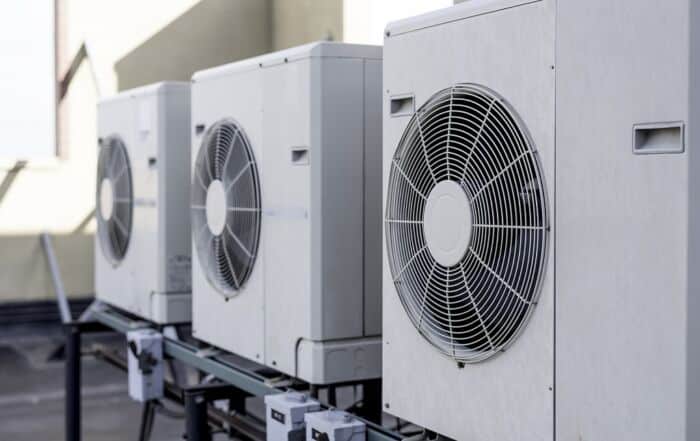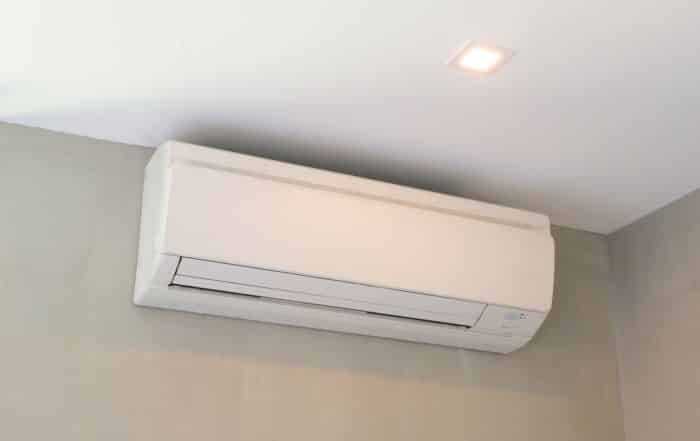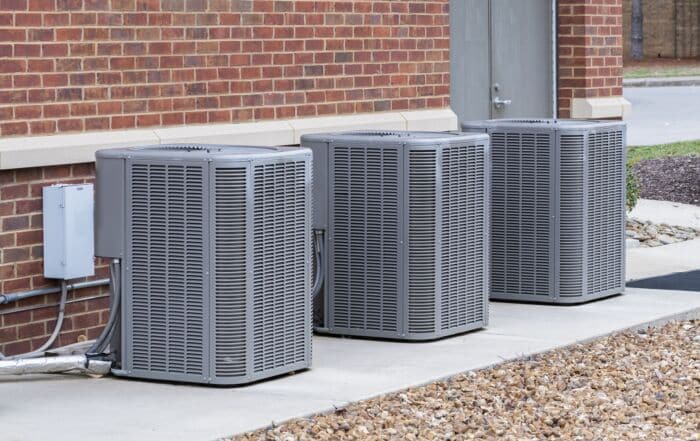Finding the perfect temperature setting for your air conditioner (AC) is more than just a matter of comfort—it's a balance between personal preferences, energy efficiency, and environmental factors. While the Department of Energy suggests a standard setting of 78°F for energy efficiency, the optimal temperature for your home can vary based on a range of factors. This detailed guide, provided by Dallas Heating and Air Conditioning, will explore these factors, debunk common myths, and offer practical advice on optimizing your AC settings.
Understanding the Ideal Temperature Setting
The ideal temperature setting for your AC isn't one-size-fits-all. Various factors influence what might be the best temperature for your specific needs. Here's an in-depth look at the factors that play a role in determining the right setting for your home.
Local Climate
Dallas, TX, is known for its hot and humid summers. The external climate significantly impacts your indoor comfort and cooling efficiency. On extremely hot days, setting your AC to 78°F might feel warmer than it does during milder weather. It’s essential to adjust your thermostat settings based on the outdoor temperature to maintain a comfortable indoor environment without overworking your AC unit.
House Size and Insulation
The size of your home and the quality of its insulation affect how well your AC system maintains the desired temperature. Larger homes or those with poor insulation may need to have the thermostat set to a lower temperature to achieve the same comfort level as smaller or well-insulated homes. Proper insulation helps retain cool air and can reduce the strain on your AC system, allowing for a higher thermostat setting while still maintaining comfort.
Number of Occupants
The number of people living in your home influences how much heat is generated inside. More occupants produce more body heat, which can make a room feel warmer. If your home is frequently occupied, you might need to set your AC to a lower temperature to compensate for the additional heat. Conversely, when fewer people are home, you might be able to raise the temperature without sacrificing comfort.
Personal Comfort Preferences
Personal comfort preferences vary widely. Some people may prefer a cooler environment, while others are comfortable with a warmer setting. It’s important to find a temperature that satisfies all household members' comfort needs. This might involve setting different temperatures in various parts of the home if you have a zoning system or using personal fans to achieve the right level of comfort.
Time of Day
Temperature needs can change throughout the day. At night, when outdoor temperatures drop, you might not need to keep your AC as cool as during the day. Many people find that cooler temperatures are beneficial for sleeping, typically between 65°F and 70°F. This helps lower your body’s core temperature, promoting better sleep quality. Adjusting your thermostat based on time of day can help balance comfort and energy efficiency.
Home Occupancy
When your home is empty, it's an excellent opportunity to save energy by raising the thermostat temperature. The U.S. Department of Energy recommends increasing the temperature by 7-10°F when you are away from home or asleep. This adjustment can lead to significant energy savings without compromising comfort when you return home.
Health Conditions
Certain health conditions may necessitate a specific indoor temperature. For example, individuals with respiratory issues or other medical conditions might need a cooler environment to breathe comfortably. Conversely, elderly individuals and infants might require warmer temperatures. Adjusting the thermostat to accommodate these needs ensures a comfortable and health-conscious living environment.
Age of AC Unit
The age and type of your AC unit can influence its efficiency and the optimal temperature setting. Older units might not be as effective at cooling, meaning you might need to set the temperature lower to achieve the desired comfort level. Newer, more efficient units can maintain comfort more easily and may allow for a higher thermostat setting without compromising performance.
The 20-Degree Rule
A useful guideline for optimal AC performance is not to set your thermostat more than 20 degrees lower than the outside temperature. This rule helps avoid overworking the system and maintains efficiency. For example, if it’s 90°F outside, setting your AC below 70°F might be inefficient and lead to increased energy consumption.
Humidity Control
Humidity levels play a crucial role in how temperature is perceived. High humidity can make a room feel warmer, while low humidity can make it feel cooler. During hot and humid months, it might be necessary to set your AC to a lower temperature to control humidity levels effectively and maintain a comfortable indoor environment.
Balancing Energy Efficiency and Comfort
Finding the right balance between energy efficiency and comfort involves understanding how temperature settings impact both your comfort and utility bills. Here’s how you can optimize your AC settings while keeping energy costs in check:
Understanding Energy Efficiency
A common misconception is that setting your AC to a very low temperature will cool your home faster. In reality, the AC system works at the same rate to reach the set temperature, regardless of how low it is set. Lowering the temperature setting increases energy consumption and can lead to higher utility bills.
The Department of Energy recommends setting the thermostat to 78°F during the day when you are home. When you are away or sleeping, raising the temperature by 7-10°F can help reduce energy consumption. This strategy allows for comfortable living while also saving on cooling costs.
Using Programmable and Smart Thermostats
Programmable and smart thermostats can significantly enhance your ability to manage indoor temperature efficiently. These devices allow you to set specific temperature schedules based on your daily routines. For example, you can program the thermostat to lower the temperature before you come home and raise it when you leave.
Smart thermostats offer additional features such as remote access and automation. They can learn your preferences and adjust settings accordingly, providing a balance between comfort and energy savings. Investing in a smart thermostat can help optimize your cooling system's performance and potentially reduce the need for repairs.
Optimal Temperature Settings for Various Scenarios
Sleeping
For a restful night’s sleep, it is generally recommended to set the thermostat between 65°F and 70°F. This cooler temperature range helps lower your body’s core temperature, improving sleep quality. However, infants and small children may need slightly warmer temperatures for better sleep. Adjusting the temperature to suit your family’s needs is crucial for a good night’s rest.
When Away from Home
When you’re not home, raising the thermostat temperature can lead to significant energy savings. The U.S. Department of Energy suggests increasing the temperature by 7-10°F during periods of absence. This adjustment helps reduce energy consumption while ensuring your home remains comfortable when you return.
Daily Living
During the day, finding a comfortable yet energy-efficient setting is key. For many households, 78°F is a good starting point. However, you may need to adjust this based on factors such as activity levels, external temperature, and personal preferences. Regular experimentation with different settings can help you determine the best temperature for daily living.
Addressing Common Misconceptions About AC Temperature Settings
Understanding and correcting common misconceptions about AC temperature settings can help you make more informed decisions and improve comfort and energy efficiency:
Lower Temperatures Cool Faster
It is a common myth that setting the thermostat lower will cool your home faster. In reality, the AC system will only work to reach the set temperature, regardless of how low it is set. Lowering the temperature setting does not speed up the cooling process but increases energy consumption.
Every Degree Lower Saves Energy
Each degree you lower the temperature increases energy consumption. Conversely, raising the thermostat by a degree can result in energy savings. For example, you can save up to 1-3% on cooling expenses for each degree you raise the thermostat. Striking a balance between energy efficiency and comfort is essential.
One-Size-Fits-All Solutions
The ideal temperature setting is not universal and can vary based on climate, insulation, and personal comfort preferences. It’s important to experiment with different settings to find what works best for your home and lifestyle.
Energy-Efficient AC Systems and Comfort
High-efficiency AC systems can reduce energy costs but may not always provide the most comfortable indoor temperature in extremely hot climates or poorly insulated homes. It’s important to balance efficiency with comfort based on your specific needs and home conditions.
Tips to Enhance Comfort and Efficiency Beyond AC Settings
While setting the thermostat is crucial for comfort and efficiency, other factors can further improve your indoor environment and reduce energy costs:
Zoning Systems
Zoning systems allow you to control temperatures in different areas of your home independently. This customization can enhance comfort and reduce energy costs by cooling only the rooms that are in use.
Window Treatments
Using window coverings to block out sunlight and heat can reduce the need for constant AC usage. Window treatments such as shades, blinds, or curtains can help maintain a comfortable indoor temperature more efficiently.
Indoor Air Quality
Maintaining good indoor air quality is essential for comfort and health. Regular air filter replacement and cleaning can improve AC efficiency and reduce the buildup of pollutants in the air. Investing in high-quality filters can also enhance the overall air quality in your home.
Energy-Efficient AC Systems
Investing in energy-efficient AC systems can provide long-term savings on energy bills while ensuring comfortable indoor temperatures. Proper sizing and maintenance of your system are key to achieving these benefits. Regular servicing and upgrades to energy-efficient models can improve performance and efficiency.
Determining the best temperature setting for your AC involves balancing personal comfort with energy efficiency. While the Department of Energy recommends 78°F as a standard setting, various factors such as climate, home size, and personal preferences play a crucial role in finding the ideal temperature for your home.
Using smart and programmable thermostats, understanding common misconceptions, and considering additional comfort factors can help you achieve a balance that ensures both comfort and cost savings. Regular maintenance and investment in energy-efficient systems can further enhance your home’s indoor environment and reduce energy consumption.
If you encounter issues with your AC system or need assistance optimizing your temperature settings, Dallas Heating and Air Conditioning is here to help. Our experienced team is ready to provide expert advice, regular servicing, and emergency repairs to ensure your home remains a comfortable haven throughout the year. Contact us today to ensure your AC system is running efficiently and effectively, providing you with the comfort and savings you deserve.
Related Posts
Exploring Ductless Air Conditioning Systems for Small Spaces
If you’re a homeowner tired of sweating through sweltering summers, a ductless air conditioning [...]
Signs Your Air Conditioning Unit Needs Professional Maintenance
Imagine coming home on a sweltering summer day only to find that your air [...]
Common Misconceptions About Air Conditioning Usage and Costs
Air conditioning units are a staple in many homes, especially during the hot summer [...]


